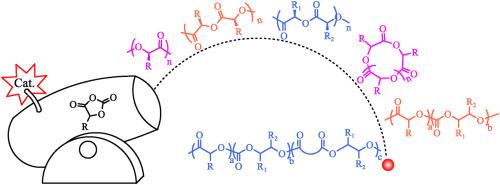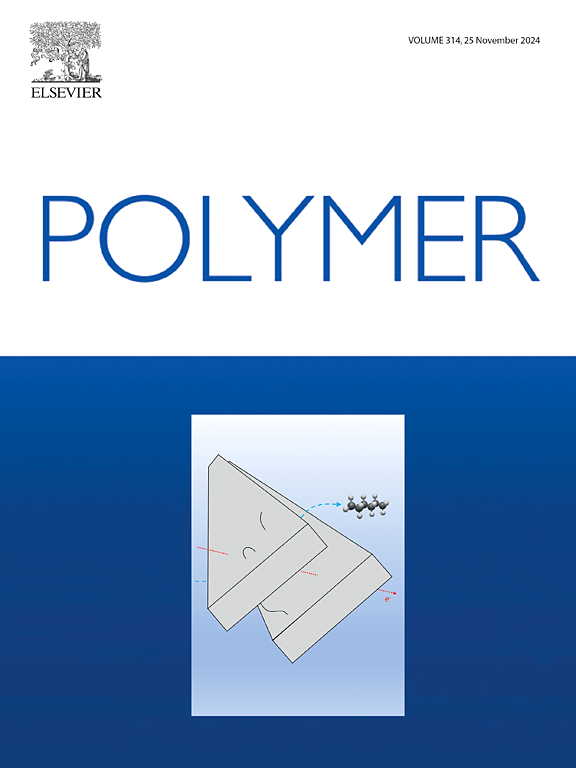Recent advances in ring-opening (co)Polymerization of O-carboxyanhydrides
IF 4.1
2区 化学
Q2 POLYMER SCIENCE
引用次数: 0
Abstract
Poly (α-hydroxy acids) (PAHAs) have garnered significant attention due to their pivotal role in various fields, including packaging, agriculture, and biomedical engineering, as biodegradable polyesters. Therefore, significant efforts have been dedicated to the development of methodologies that enable the facile preparation of PAHAs with controlled molecular weights and diverse pendant groups for versatile applications. However, the production of PAHAs through the ring-opening polymerization (ROP) of OCAs is highly challenging due to the strong side reaction of monomer racemization and the faster polymerization kinetics. To synthesize PAHAs with specific pendant groups and structure, researchers have developed a variety of ROP systems, each with its own unique advantages in recent years. Here, we have provided a summary of the fundamental characteristics and recent advancements of various methods, such as controlled/living ROP systems, topology-controlled ROP systems, stereoselective ROP systems of OCAs, and other copolymerization routes. Moreover, this article discusses the benefits and unresolved issues associated with different synthetic methods, providing readers with the necessary information to select rapid and manageable ROP systems for PAHAs synthesis.


O 型羧基酸酐开环(共)聚合的最新进展
聚(α-羟基)酸(PAHAs)作为可生物降解的聚酯,在包装、农业和生物医学工程等多个领域发挥着举足轻重的作用,因而备受关注。因此,人们一直致力于开发能够轻松制备具有可控分子量和不同悬垂基团的 PAHAs 的方法,以实现多种应用。然而,通过 OCA 开环聚合 (ROP) 法生产 PAHAs 极具挑战性,因为单体消旋化副反应强烈,聚合动力学速度较快。为了合成具有特定悬垂基团和结构的 PAHA,近年来研究人员开发了多种 ROP 系统,每种系统都有其独特的优势。在此,我们总结了各种方法的基本特点和最新进展,如可控/活体 ROP 系统、拓扑可控 ROP 系统、OCA 的立体选择性 ROP 系统以及其他共聚途径。此外,本文还讨论了与不同合成方法相关的优点和尚未解决的问题,为读者选择快速、可控的 ROP 系统进行 PAHAs 合成提供了必要的信息。
本文章由计算机程序翻译,如有差异,请以英文原文为准。
求助全文
约1分钟内获得全文
求助全文
来源期刊

Polymer
化学-高分子科学
CiteScore
7.90
自引率
8.70%
发文量
959
审稿时长
32 days
期刊介绍:
Polymer is an interdisciplinary journal dedicated to publishing innovative and significant advances in Polymer Physics, Chemistry and Technology. We welcome submissions on polymer hybrids, nanocomposites, characterisation and self-assembly. Polymer also publishes work on the technological application of polymers in energy and optoelectronics.
The main scope is covered but not limited to the following core areas:
Polymer Materials
Nanocomposites and hybrid nanomaterials
Polymer blends, films, fibres, networks and porous materials
Physical Characterization
Characterisation, modelling and simulation* of molecular and materials properties in bulk, solution, and thin films
Polymer Engineering
Advanced multiscale processing methods
Polymer Synthesis, Modification and Self-assembly
Including designer polymer architectures, mechanisms and kinetics, and supramolecular polymerization
Technological Applications
Polymers for energy generation and storage
Polymer membranes for separation technology
Polymers for opto- and microelectronics.
 求助内容:
求助内容: 应助结果提醒方式:
应助结果提醒方式:


